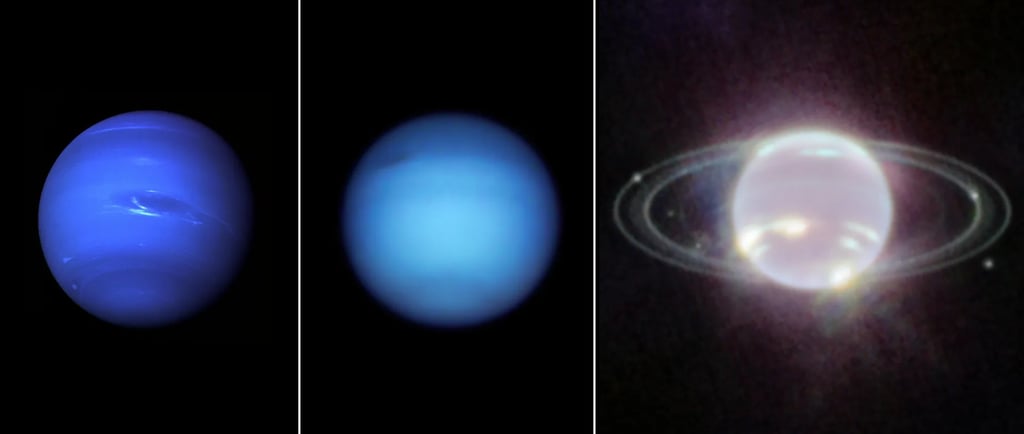The Return of Neptune's Rings: A 30-Year Celestial Phenomenon


Neptune's Rings: A Cosmic Display
After more than three decades, the majestic rings of Neptune have re-emerged in observable clarity. This rare phenomenon, which graces the skies every few decades, offers astronomers and enthusiasts alike the opportunity to witness the dynamic beauty and complex structure of the planet's rings. At the forefront of this visual spectacle are the bright areas of high-altitude clouds that encircle the planet.
The Science Behind Neptune's Rings
The rings of Neptune, characterized by their intricate design, are made up of various microscopic particles ranging in size. The prominent feature of this recent observation includes bright streaks and spots that seem to reflect sunlight, resulting in vivid visual allure. This spectacular display results from the interaction of sunlight with methane ice clouds found in the atmosphere of Neptune, particularly those at altitudes between 0.6 to 5 microns. The presence of these methane ice clouds adds layers of complexity to the planet's appearance, enhancing the visibility of the rings.
Implications for Astronomical Studies
The re-emergence of Neptune's rings not only provides a feast for the eyes but also serves as a valuable opportunity for scientific inquiry. Understanding Neptune's atmospheric dynamics, especially the formation and maintenance of its rings, contributes to our overall knowledge of planetary systems. Observations made during this period can assist scientists in deciphering the composition, structure, and evolution of celestial bodies within our solar system.
The excitement surrounding the visible rings underscores the ongoing importance of space exploration and observation. Equipped with advanced telescopes and imaging technology, astronomers can capture detailed studies of Neptune, allowing us to further unlock the mysteries of our cosmic neighborhood.
